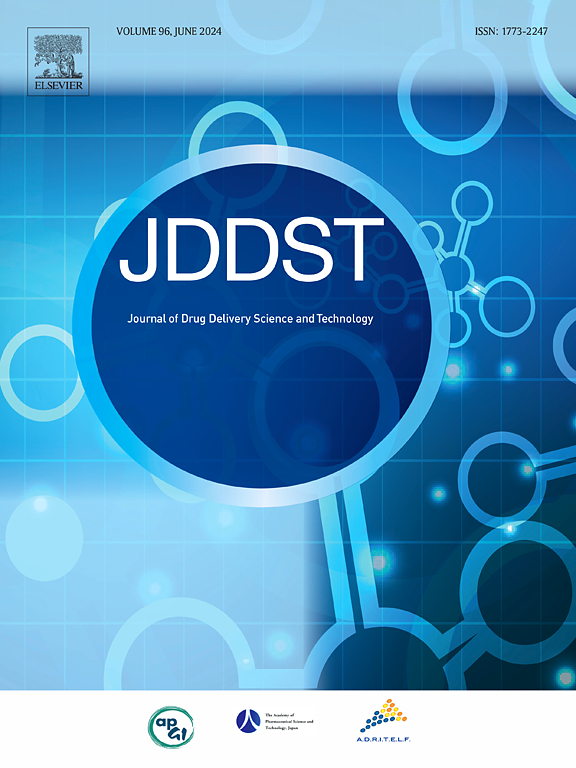A novel strategy for encapsulation and controlled release of Schisantherin a employing biofriendly polydopamine microparticles built on biomineralized calcium carbonate crystals
IF 4.5
3区 医学
Q1 PHARMACOLOGY & PHARMACY
Journal of Drug Delivery Science and Technology
Pub Date : 2025-04-02
DOI:10.1016/j.jddst.2025.106893
引用次数: 0
Abstract
Schisantherin A (SCA) has recently attracted increasing attention because of its promising biological profile. However, poor aqueous solubility and bioavailability have limited the efficacy of SCA in pharmaceutical applications. In this study, novel complex CaCO3-based biomineralized microparticles that demonstrate significant potential as carriers for loading and delivering SCA were constructed for the first time by employing gum arabic as the stable template and polydopamine as the functional coating agent. The results show that these composite microparticles have a high SCA loading rate of 15.6 ± 0.4 % and a pH-responsive drug release characteristic under simulated in vitro conditions. Further investigation revealed that the encapsulated forms of SCA exhibit significantly enhanced synergistic antioxidant activity and antibacterial efficacy against Staphylococcus aureus compared to the carrier-free SCA. Furthermore, a 4′,6-diamidino-2-phenylindole (DAPI) staining experiment and a rhodamine 123 (Rh123) fluorescence staining test of lipopolysaccharide (PSL) induced BV-2 microglial cells demonstrated that the encapsulated form of SCA exhibits considerable efficacy in inducing changes in the morphology and structure of cells. With these findings, this study provides a new type of CaCO3-mediated particle carrier that is useful for targeted and controlled release applications.

求助全文
约1分钟内获得全文
求助全文
来源期刊
CiteScore
8.00
自引率
8.00%
发文量
879
审稿时长
94 days
期刊介绍:
The Journal of Drug Delivery Science and Technology is an international journal devoted to drug delivery and pharmaceutical technology. The journal covers all innovative aspects of all pharmaceutical dosage forms and the most advanced research on controlled release, bioavailability and drug absorption, nanomedicines, gene delivery, tissue engineering, etc. Hot topics, related to manufacturing processes and quality control, are also welcomed.

 求助内容:
求助内容: 应助结果提醒方式:
应助结果提醒方式:


